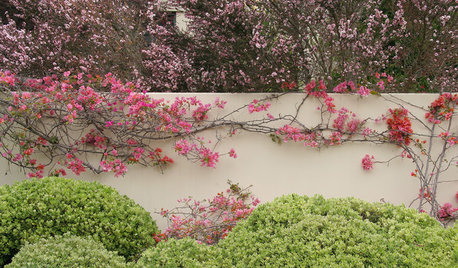Yield of Standard Peach vs. Dwarf
cindybird
13 years ago
Related Stories

EDIBLE GARDENSHow to Grow Your Own Peaches and Nectarines
Make gardening a little sweeter with these juicy fruits, which you can eat after plucking or preserve for later
Full Story
EDIBLE GARDENSHow to Grow 10 Favorite Fruit Trees at Home
Plant a mini orchard in fall, winter or early spring to enjoy fresh-off-the-tree fruit the following year
Full Story
GARDENING FOR BUTTERFLIESGardening for the Bees, and Why It’s a Good Thing
When you discover how hard bees work for our food supply, you may never garden without them in mind again
Full Story
FARM YOUR YARDIf You Have Room for Only One Fruit Tree ...
Juice up a small garden with one of these easier-care or worth-the-effort fruit trees for a mild climate
Full Story
WHITEWhat to Know Before You Paint Your Walls White
A coat of white paint can do wonders in one room and wreak havoc in another. Here are tips for using the popular hue
Full Story
BEDROOMSHouzz Quiz: What Color Should You Paint Your Bedroom Walls?
Cool and soothing, or warm and spicy? Answer these questions and learn what hue is right for you
Full Story
LANDSCAPE DESIGN15 Great Ideas for a Lawn-Free Yard
End the turf war for good with hardscaping, native grasses and ground covers that save water and are easier to maintain
Full Story
LANDSCAPE DESIGNThe Art of the Espalier
Go ahead, let limited garden space drive you up the walls. With these 6 ways to train plants vertically, it can be a beautiful thing
Full Story
GARDENING GUIDESLush, Foodie Abundance in a Small Urban Garden
This modest backyard garden provides its owner with fruit and vegetables all year round, thanks to an innovative low-maintenance approach
Full Story
COLORHow to Use Marsala, Pantone’s 2015 Color of the Year
Pantone digs deep and goes earthy with its selection. Here are ways to make it work in your home
Full StoryMore Discussions








kokopelli5a
cindybirdOriginal Author
Related Professionals
Citrus Heights Landscape Architects & Landscape Designers · Horsham Landscape Architects & Landscape Designers · Aurora Landscape Contractors · Peabody Landscape Contractors · Brookside Landscape Contractors · Dinuba Landscape Contractors · El Reno Landscape Contractors · Kaneohe Landscape Contractors · La Verne Landscape Contractors · Las Vegas Landscape Contractors · Milford Landscape Contractors · Salem Landscape Contractors · Streamwood Landscape Contractors · Tamarac Landscape Contractors · Palos Heights Landscape Contractorsmisterbaby
hoosierquilt USDA 10A Sunset 23 Vista CA
calliope
kokopelli5a
olpea
alan haigh
passion4passies
olpea
alan haigh
Redhaven
Redhaven
olpea
kokopelli5a
Redhaven
Redhaven
olpea
Redhaven
conan
john_in_sc
cindybirdOriginal Author